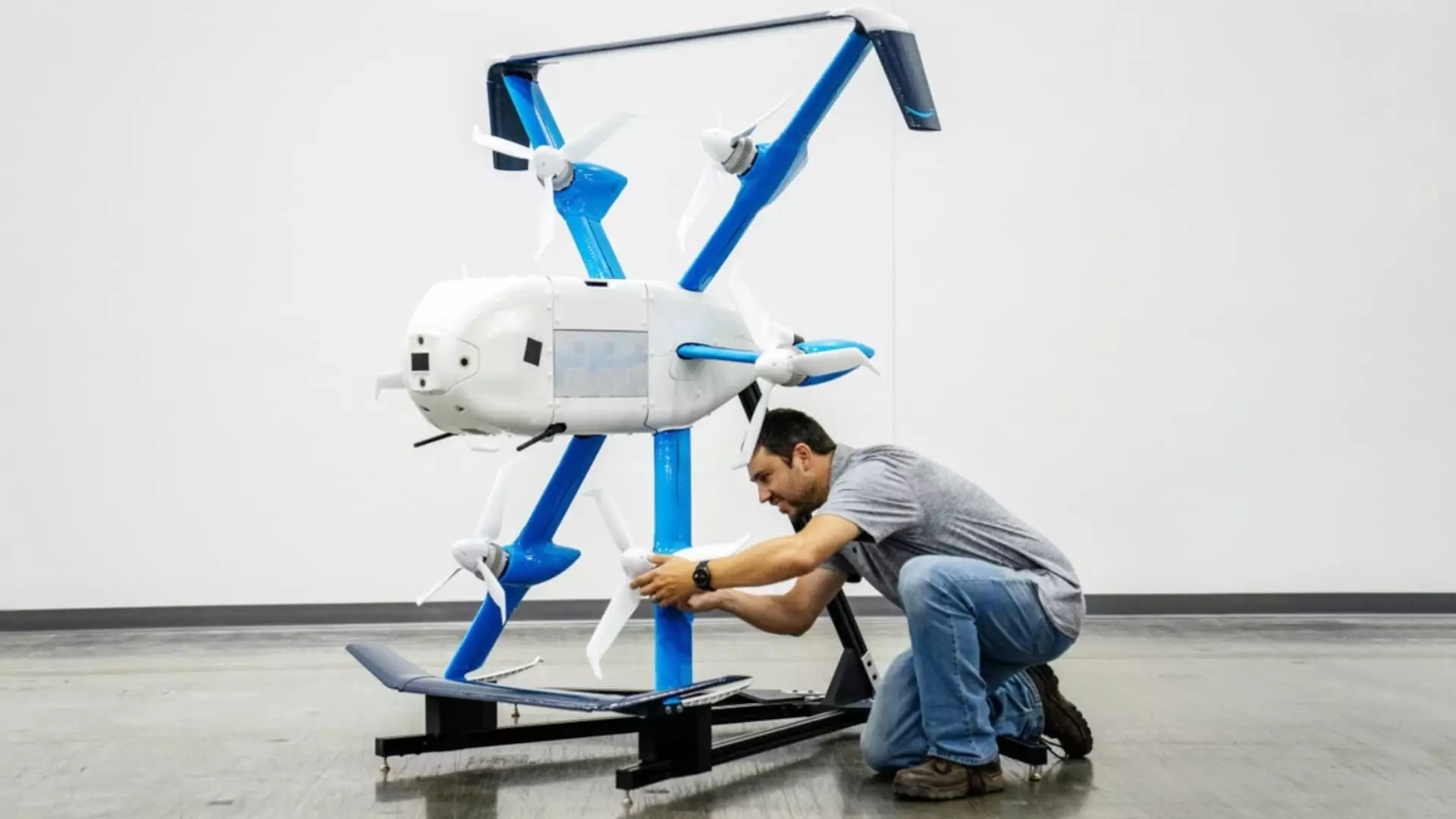Amazon’s venture into drone delivery has taken a significant step forward with the announcement of regulatory approval for its new MK30 drone. This development is not only a milestone for the tech giant but also an essential component of its vision to revolutionize the logistics and delivery sector. However, the path to implementing this futuristic solution has been riddled with challenges, raising questions about the feasibility and practicality of drone delivery on a large scale.
Initially introduced in November 2022, the MK30 drone is a smaller and quieter model compared to its predecessors, boasting capabilities that include functioning in light rain and extending its flight range significantly. Amazon’s aim with the MK30 is to enhance the efficiency and reliability of its delivery services, addressing some of the concerns that have historically plagued the company’s drone program. The latest approval from the Federal Aviation Administration (FAA) is a critical breakthrough, allowing Amazon to conduct beyond-visual-line-of-sight operations—an expansion that is necessary for scaling their delivery model.
Despite these advancements, the road to approval has been complex. Approval from the FAA is not just a regulatory hurdle; it’s a testament to the increased scrutiny on unmanned aerial vehicle operations. The FAA had previously granted Amazon a limited waiver for its Prime Air program, but the restrictions primarily confined operations to specific locations. This latest development expands the operational parameters, illustrating the gradual shift in regulatory attitudes toward drone deliveries.
Amazon has opted for an incremental approach by beginning operations in Tolleson, Arizona, aligning drone deliveries with existing warehouses to maximize logistical efficiency. This strategic rollout is crucial, as it demonstrates Amazon’s intent to seamlessly weave drone technology into its established delivery framework. By closely integrating drone operations with traditional logistics, Amazon can potentially reduce delivery times, which is a significant competitive advantage in the fast-paced e-commerce environment.
However, the choice of test locations is not without its complexities. The company had previously faced pushback in Lockeford, California, leading to the decision to shift operations. Community sentiments often play a pivotal role in the success of such initiatives, as seen in College Station, Texas, where residents raised concerns about noise pollution. Amazon’s commitment to engage with local populations and scout alternative launch sites underscores the importance of public acceptance in operational feasibility.
Despite Amazon’s ambitious vision, the rollout of its Prime Air program has faced considerable obstacles. Originally touted as a near-future service by founder Jeff Bezos over a decade ago, the program has had its share of missed deadlines and regulatory challenges. These setbacks have prompted Amazon to reassess its strategy, resulting in management changes and operational layoffs, a reflection of broader cost-cutting measures initiated by CEO Andy Jassy.
The turnover of key personnel, including leaders crucial for interaction with regulatory bodies like the FAA, signals internal turbulence that could influence the program’s trajectory. While hiring individuals with extensive aviation backgrounds, such as former Boeing executive David Carbon, might provide fresh insight and direction, the consistent evolution of regulatory requirements poses an ongoing challenge for all stakeholders involved in drone technology.
Amazon is not venturing into the drone delivery market alone. It faces stiff competition from established players like Wing, UPS, and Walmart, as well as emerging startups specializing in drone logistics. This competition serves as both a motivator and a reminder of the hurdles that must be overcome for significant market penetration. The success of Amazon’s drone program could very well depend on how quickly it can adapt to evolving regulations, address community concerns, and innovate in tandem with competing technologies.
As the landscape of logistics continues to evolve, the outcome of Amazon’s drone delivery initiative will be closely watched, not just for its implications for the company itself, but for the future of automated delivery systems as a whole. The challenges ahead are formidable, and how Amazon navigates these will undoubtedly set the tone for the industry at large.


Leave a Reply